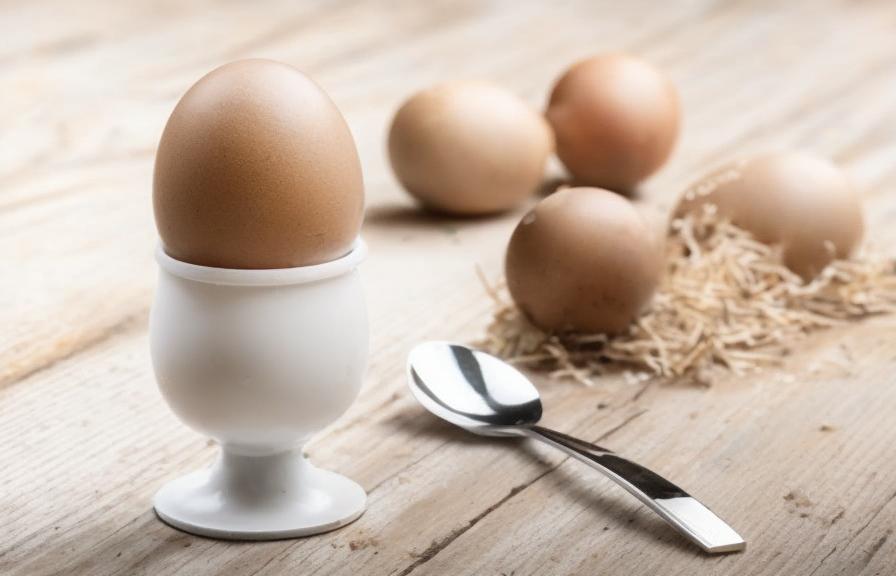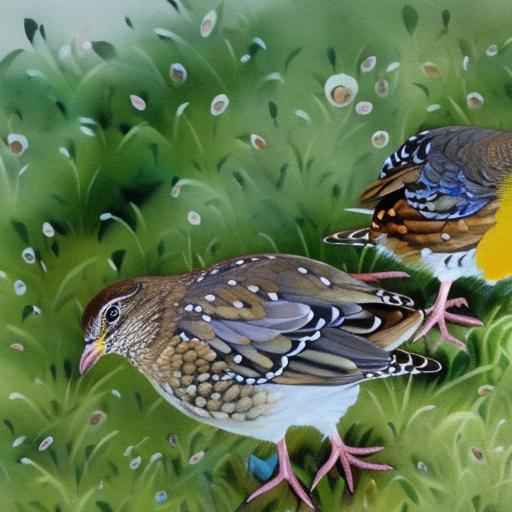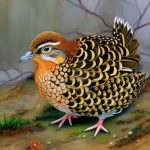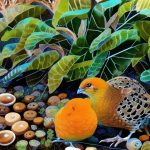Button quail, also known as Chinese painted quail, are small, ground-dwelling birds that are popular among aviculturists for their charming appearance and relatively easy care. Breeding season for button quail typically occurs during the warmer months, from spring to early fall, when the days are longer and the temperatures are higher. During this time, button quail become more active and display mating behaviors as they prepare to breed. As a breeder, it’s important to understand the signs of breeding readiness in button quail, how to set up the ideal breeding environment, the breeding process itself, and how to care for the chicks that hatch. Additionally, being aware of common challenges that may arise during the breeding season can help you anticipate and address any issues that may arise. By understanding the intricacies of button quail breeding season, you can increase your chances of successful breeding and raise healthy chicks.
Key Takeaways
- Button quail breeding season typically occurs during the warmer months of the year, with peak breeding activity in spring and summer.
- Signs of breeding readiness in button quail include increased vocalization, courtship displays, and the female laying eggs.
- Setting up the ideal breeding environment for button quail involves providing a spacious and secure enclosure with proper nesting materials and a balanced diet.
- The breeding process of button quail involves the male courting the female, mating, and the female laying eggs in the nest.
- Caring for button quail chicks requires providing a warm and safe brooding area, feeding them a high-protein diet, and monitoring their health and development.
- Common challenges during button quail breeding season include egg infertility, egg binding in females, and aggression between breeding pairs.
- In conclusion, successful button quail breeding can be achieved by providing a suitable breeding environment, closely monitoring breeding pairs, and addressing any challenges that may arise.
Signs of Breeding Readiness in Button Quail
During the breeding season, male button quail will become more vocal and may display aggressive behavior towards other males as they compete for the attention of females. They will also puff up their feathers and perform a “bobbing” display to attract a mate. Female button quail will also become more vocal and may show a receptive posture by crouching down with their tail raised when approached by a male. Additionally, both males and females may engage in courtship behaviors such as chasing each other and performing a “dance” where they circle each other with their tails raised. Another clear sign of breeding readiness is the presence of eggs in the nesting area. Female button quail will lay eggs every one to two days until they have a clutch of 8-12 eggs. These signs indicate that your button quail are ready to breed, and it’s important to provide them with the ideal breeding environment to encourage successful mating and egg-laying.
Setting Up the Ideal Breeding Environment for Button Quail
Creating the ideal breeding environment for button quail is essential for successful breeding. Start by providing a spacious and secure enclosure that allows for natural behaviors such as dust bathing, foraging, and nesting. The enclosure should have a substrate such as sand or peat moss for nesting, as well as hiding spots such as plants or shelters to provide privacy for the birds. Additionally, it’s important to provide a balanced diet that includes high-quality game bird feed, fresh water, and occasional treats such as mealworms or greens. To encourage breeding behavior, consider adding natural materials such as dried grasses or coconut fiber for nesting material. It’s also important to maintain a stable temperature and humidity level in the breeding environment, as fluctuations can negatively impact breeding success. By creating an environment that meets the physical and behavioral needs of button quail, you can encourage natural breeding behaviors and increase the likelihood of successful mating and egg-laying.
The Breeding Process of Button Quail
Once your button quail are displaying signs of breeding readiness and you have set up the ideal breeding environment, the breeding process can begin. Male button quail will typically initiate mating by approaching a receptive female and performing a “tapping” display with his beak on her back. If the female is receptive, she will crouch down and allow the male to mount her for copulation. After mating, the female will begin laying eggs in the nesting area, typically laying one egg every one to two days until she has completed her clutch. It’s important to provide a quiet and undisturbed environment during this time to reduce stress on the breeding pair. Once the eggs are laid, both male and female button quail will take turns incubating the eggs by sitting on them to keep them warm until they hatch, which typically takes 16-18 days. It’s important to monitor the nesting area regularly to ensure that the eggs are being cared for properly and to address any issues that may arise during the incubation period. By understanding the natural breeding process of button quail and providing appropriate care and monitoring, you can increase the chances of a successful hatch.
Caring for Button Quail Chicks
Once the button quail eggs have hatched, it’s important to provide proper care for the chicks to ensure their health and well-being. Chicks should be kept in a warm brooder with a temperature of around 95-100 degrees Fahrenheit for the first week, gradually decreasing by 5 degrees each week until they are fully feathered. Provide a non-slippery surface such as paper towels or rubber shelf liner in the brooder to prevent leg issues in the chicks. Additionally, it’s important to provide a balanced diet for the chicks that includes high-protein chick starter feed and access to fresh water. It’s also important to monitor the chicks for any signs of illness or weakness and provide appropriate veterinary care if needed. As the chicks grow, they can be transitioned to a larger enclosure with appropriate substrate for foraging and natural behaviors. By providing proper care for button quail chicks from hatching through to adulthood, you can help them thrive and contribute to the overall success of your breeding program.
Common Challenges During Button Quail Breeding Season

While breeding button quail can be a rewarding experience, there are common challenges that breeders may encounter during the breeding season. One challenge is aggression between breeding pairs or among males competing for females. This can result in injury or stress for the birds and may require separating aggressive individuals or providing additional hiding spots in the enclosure. Another challenge is infertility or poor hatch rates, which can be caused by factors such as inadequate nutrition, age of the birds, or environmental stressors. It’s important to address these issues by providing a balanced diet, ensuring that breeding pairs are healthy and of appropriate age, and maintaining a stable and stress-free environment. Additionally, some breeders may encounter difficulties with hand-rearing chicks if they are abandoned by their parents or if there are issues with incubation or hatching. Providing proper care and nutrition for hand-reared chicks is essential for their survival and development. By being aware of these common challenges and taking proactive measures to address them, breeders can increase their chances of successful button quail breeding.
Conclusion and Tips for Successful Button Quail Breeding
In conclusion, button quail breeding season is an exciting time for aviculturists who are passionate about raising these charming birds. By understanding the signs of breeding readiness, setting up the ideal breeding environment, facilitating the natural breeding process, caring for chicks, and addressing common challenges, breeders can increase their chances of successful button quail breeding. Some additional tips for successful breeding include providing ample space and natural materials in the enclosure, monitoring breeding pairs closely for signs of aggression or stress, and seeking advice from experienced breeders or avian veterinarians if any issues arise. With proper care and attention to the needs of button quail during the breeding season, breeders can enjoy the rewards of raising healthy chicks and contributing to the conservation of these delightful birds in captivity.
If you’re looking to optimize your button quail breeding season, it’s essential to provide them with the right environment. A well-designed coop can make a significant difference in their breeding success. For tips on creating the perfect coop, check out this informative article on what kind of coop is best for chickens. A suitable coop can help maintain the ideal conditions for button quail breeding and ensure a successful season.
FAQs
What is the breeding season for button quail?
The breeding season for button quail typically occurs during the warmer months of the year, from spring to early fall.
How do button quail breed?
Button quail breed through a courtship display, where the male will puff up his chest and call out to attract a female. Once a pair has formed, they will mate and the female will lay eggs.
How many eggs do button quail lay during breeding season?
During the breeding season, a female button quail can lay anywhere from 5 to 12 eggs in a clutch.
How long does it take for button quail eggs to hatch?
Button quail eggs typically take around 16 to 18 days to hatch after they have been laid.
What should I do to prepare for button quail breeding season?
To prepare for button quail breeding season, ensure that the birds have a suitable nesting area with soft bedding material, a balanced diet, and a stress-free environment. It is also important to provide adequate space for the birds to engage in their courtship behavior.
Meet Walter, the feathered-friend fanatic of Florida! Nestled in the sunshine state, Walter struts through life with his feathered companions, clucking his way to happiness. With a coop that’s fancier than a five-star hotel, he’s the Don Juan of the chicken world. When he’s not teaching his hens to do the cha-cha, you’ll find him in a heated debate with his prized rooster, Sir Clucks-a-Lot. Walter’s poultry passion is no yolk; he’s the sunny-side-up guy you never knew you needed in your flock of friends!







